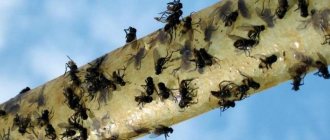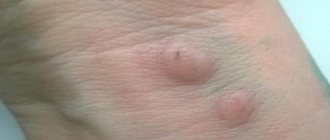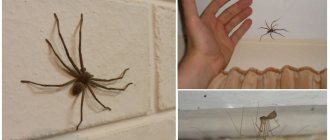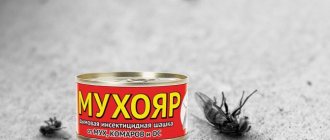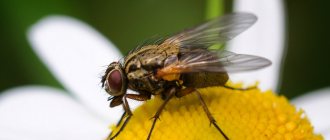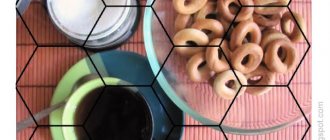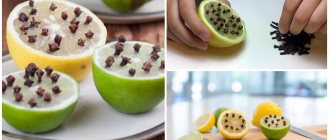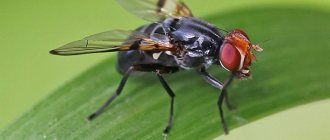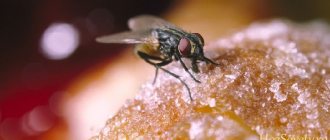How great it is when the sun is shining outside the window, everything around is blooming and green, and the thermometer rises higher and higher every day. But with warmth comes not only pleasant moments, but also something very annoying and unnerving for almost any person - insects. They fly into houses and cars and land on the body. Mosquitoes, midges, bees, beetles - there are a lot of representatives of the buzzing and so annoying brethren, but among them there are also especially nasty ones. And here, at least once, everyone has asked the question of why flies land on people. Well, it's worth figuring it out!
What kind of animal is this?
Before looking for the answer to the question of why flies land on humans, it is necessary to understand what kind of creatures they are. They belong to representatives of the order Diptera, which also includes mosquitoes. Speaking of flies, many people imagine almost the same insect, which constantly buzzes in the room or hovering in a swarm over the trash heap.
In fact, representatives of this species are very diverse, live in different parts of the world, and can be both very dangerous to humans and completely harmless. The diet of an ordinary housefly is quite wide: fat, sweat, blood and other secretions of living creatures, nectars and plant juices, the remains of other insects or human food. They eat with the help of an unusually shaped tongue - in the form of a proboscis, through which the fly sucks in its prey.
How to treat a bite?
Now it’s quite reasonable to talk about what to do if you’re bitten by a fly. First aid measures are somewhat similar to those provided for a wasp sting, but, of course, in a much milder version.
So, if you are bitten by a fly, you need to do the following:
- wash the wound, preferably with hydrogen peroxide or just a soap solution;
- take an antihistamine, for example, suprastin;
- To relieve pain, you can apply cold packs with ice to the bitten area;
- treat the bite site with iodine;
- Monitor your condition and the appearance of the wound for any suspicion of infection.
Thus, if everything goes well and the bite site begins to heal (usually the next day), you don’t have to worry, the inflammation will soon go away on its own. If there is a persistence of the inflammatory process at the site of the bite, or, moreover, a deterioration in health, you should immediately consult a doctor.
Temporal features
Surely many have noticed that the pestering of these insects at different times of the day has different intensity. So why do flies land on people more often in the morning than, for example, in the evening? Firstly, a person sweats throughout the night and, accordingly, after sleep, a fairly large amount of secretions accumulates on his body, which smells so appetizing to insects. Secondly, in the dark, flies are inactive and, like their “victims,” rest. Naturally, in the morning insects begin their active activity for the purpose of food. So the answer to the question: “Why do flies pester a person in the morning?” - trivially simple. They, just like people, just want a hearty breakfast!
Peculiarities of life of biting flies
Flies are dipterous insects distributed throughout the world. Currently, about 5 thousand of their species are known. The bulk feeds on plant sap, decaying fruits and other organic matter, feces, and manure. Only a small proportion of these insects bite. Blood-sucking flies are capable of attacking people and animals. The most common of them are burner flies.
In appearance and biological characteristics, burners are very similar to house flies, which is why they believe that house flies bite. These are gray insects 5-7 mm long. The main difference from non-predatory species of flies is in the structure of the proboscis. Ordinary flies cannot bite a person or animal, since their proboscis is soft and cannot pierce the skin. In stink bugs, the proboscis is elongated and “armed” with rough chitinous plates, with which they cut through the skin of the prey. Both females and males of these insects feed on blood (and therefore bite). Mostly their victims are animals and only sometimes people. Penetrating the skin with their proboscis, burn flies inject poisonous saliva into the wound, so their bite causes severe pain and itching.
During the summer, flies are found in large numbers in places where domestic animals gather - in pastures and farms, where they have all the conditions for feeding and breeding. During her life, one female lays up to 400 dirty-white eggs in manure or rotting plant debris, and sometimes in animal wounds. The larvae emerge from the eggs after 1-5 days, depending on the ambient temperature. The future fly remains in the larval phase for 2-4 weeks, after which a pupa is formed. After another 7-26 days, young flies are born and are capable of laying eggs for about 10-15 days. Thus, the development cycle of a fly from egg to insect emergence lasts from three to eight weeks. During the warm season, several generations of the zhigalka manage to emerge, quickly increasing their numbers. By autumn, the largest number of individuals is reached.
The mechanical method of controlling flies is the simplest and most harmless, but ineffective
The danger of fly bites and methods of combating them
In the fall, with the onset of cold weather at night, these insects often fly into warm houses and apartments, and, having no other sources of food, bite people. That is why most often these insects bite in the fall. The appearance of a burner fly in human housing is especially dangerous if there are infants or elderly and disabled people in the house who are not able to drive away insects and prevent a bite.
Burner flies feed on blood, which means they bite animals and people. At the same time, they are capable of transmitting pathogens of dangerous diseases, such as tularemia, sepsis, trypanosomiasis, anthrax and many others. It is clear that it is better to prevent bites from these insects. Measures to control biting flies are practically no different from methods to control house flies. They can be divided into mechanical, chemical and biological.
Mechanical barriers include various barriers on windows and ventilation in the form of mosquito nets that prevent insects from entering the premises.
To destroy those individuals that managed to get into the apartment, sticky tapes or various types of traps are used.
These methods are effective in controlling adult flies and are aimed at preventing insect bites. These methods are harmless to residents, which is why they are used mainly in residential premises.
- Chemical agents, which include various insecticides, help get rid of not only adult insects, but also larvae. These preparations are used to treat farm premises, manure heaps, and animal stalls.
- On large farms it is possible to use biological control methods that are completely harmless to humans and animals. For this purpose, insect predators (entomophages) are used, which feed on various types of flies and their larvae. The population of harmful flies will decline rapidly.
Special aroma
Sometimes the answer to the question: “Why do flies land on people?” — lies not at all in body odor, but rather the opposite. The fact is that some aromas that people apply to their bodies in the form of perfumes, eau de toilettes or deodorants turn out to be incredibly attractive to insects.
Of course, this happens extremely rarely with products from well-known brands, since famous manufacturers take care to prevent such a problem. But with perfumes of unknown brands, produced unknown where, how and by whom, this can easily happen.
What does the Drosophila fly eat?
Photo: Male Drosophila fly
Fruit flies, as noted earlier, are permanent inhabitants of places where vegetables and fruits are stored. They are present in large quantities in large warehouses, vegetable stores, shops, and markets. And from these places they end up in residential buildings, restaurants and apartments. Drosophila flies find their food in these places.
The vinegar fly, which is no more than three millimeters long, has an excellent appetite. It feeds on plant sap, plant debris, and rotting parts of fruits. During the larval stage, Drosophila also consume various microorganisms. The diet of adult fruit flies includes: onions, potatoes, apples, nuts, cherries, grapes, pumpkins, cereals, jams, preserves, fruit compotes, and much more.
These products serve not only as food, but also as a breeding ground. In the presence of a suitable temperature regime and the appearance of fermentation products, Drosophila flies begin to actively reproduce. It is extremely difficult to combat such insects, especially in large warehouses, where it is difficult to find and eliminate all spoiled fruits and vegetables. It’s easier to get rid of annoying midges at home. It is enough to deprive it of its food supply. You should constantly review vegetables, fruits, and cereals, take out trash in a timely manner, and frequently wash food storage containers.
Is it dangerous?
In addition to the question of why flies land on people, many are also concerned about how dangerous it is. The insects themselves that fly into rooms or buzz annoyingly in the courtyard of a house are most often harmless. Much more trouble for human health can be caused by the bacteria that these very flies carry.
The fact is that these dipterans are not particularly picky about the objects they land on. Therefore, the situation is absolutely real when a fly, having previously sat on a stale or unprocessed product (meat, fish) or, even worse, on the remains or waste products of some creature, can easily land on a person. If there is a wound or scratch on the body, and an insect walks over it with its paws, infection is likely.
Fly larvae can pose another danger. Having found a suitable environment, dipteran parents will happily settle their offspring there. If these larvae enter the human body, the consequences can be very tragic.
Why are they annoying in the morning?
Most often, annoying insects land on people in the morning because the latter are less mobile during sleep. As long as their body does not move, the flies will “do their thing.” These creatures have no sense of tact, so they pester you until the last minute. At the slightest movement, the insects immediately fly away, but as their “prey” calms down, they return again. Flies are not distinguished by good memory: despite human desire
What do you do with food that a fly lands on? We all know that these insects spread germs! But it’s summer, barbecue, so don’t you throw away food after such an incident? It's up to you to decide, but experts have found that negligence can actually be dangerous.
Spring has finally arrived - finally and irrevocably. Warm weather is a great way to get out into nature. There is just one danger that for some reason we are too indifferent to. These are flies that land on your food. For most people this is a minor irritation, but in reality there is a HUGE amount of bacteria on the tips of every fly's feet that can pose a major threat to human health.
Moreover, a fly almost always manages to eat something in just a second, i.e. before you drive her away. Flies carry more than 200 types of harmful bacteria. This is because they love rotting food and excrement, as well as very sweet substances like overripe fruit or spilled soda. Thousands of tiny hairs on the flies' legs carry dangerous microbes that enter the food INSTANTLY, at the slightest contact. And if you then still eat a sandwich “bitten” by a fly, these bacteria enter your body, explains Ron Harrison, director of the British Technical Institute, which studies pests and methods of controlling them. Of course, your body can handle most of these bacteria. But there is, albeit a small, but chance of catching terrible things in this way: cholera, dysentery or even typhoid fever. So always protect your food from annoying insects, especially flies! Therefore, if a fly lands on food, it is better to cut off and throw away the part where it was sitting to avoid infection. Do this not only outdoors, but also at home, when your windows are wide open! By the way, there is another disgusting thing associated with flies. They defecate at almost every landing site. And you eat this feces if you don’t disdain such things! And further. When these insects chew, they secrete their digestive enzymes into the food areas to make it easier for themselves to digest the food...
But now think about the fact that you can eat it too...
If you've seen a fly rubbing its legs, you've probably wondered why it does this. You probably think that when a fly rubs its legs, it is cleaning them.
And you are absolutely right!
Why is she doing this? Is a fly, a carrier of many infections and bacteria, really a cleaner?
The end of a fly's foot (275x magnification). Between the two large “hooks” there is a pad with small bristles that secrete a sticky liquid. Photo: Trevor A. Minning, Source: filebox.vt.edu
Not certainly in that way. The fly does indeed clean dirt from its legs, but not for reasons of hygiene.
The fact is that the fly's foot ends in two pads - pulvilli. Pulvillia are covered with thin setae. These bristles secrete a sticky liquid consisting of a mixture of carbohydrates and fats. The sticky secretion (liquid) of the bristles holds the fly on a smooth surface by capillary attraction.
By studying the tracks of flies walking on clean surfaces, scientists discovered that they are identical in shape to the pads on the ends of their legs. Chemical analysis of the traces showed that they consisted of fats. Although grease itself is slippery, it helps hairs stick to smooth surfaces such as glass. The reason is the high surface tension of the fat. If the legs of a fly are degreased by dipping them in hexane for a short time, the fly will temporarily lose the ability to move on the glass surface and begin to slide.
Of course, when a fly crawls over various surfaces, dirt collects on the sticky pads and bristles of its legs. To prevent the adhesion of the legs to the surface when crawling from deteriorating due to this, the fly regularly “toilets” all six legs, cleaning them from adhering particles of debris.
By the way…
In addition, the fly has short bristles on the pulvillas - organs of touch and taste. That is, the fly senses taste first of all... with its legs, and only then with its proboscis and sucking blades! Moreover, a fly analyzes food with its feet 100-200 times better than a human with its tongue.
Publicat pe 14 June. 2018
Why do flies land on people? It’s unlikely that anyone likes it when this buzzing insect flies around the room. Besides the unpleasant sound, flies irritate us by crawling on our body. And if no one paid much attention to this before, then in the 20th century the world suddenly learned that this dipteran spreads bacteria that can be very dangerous to humans. Initially, it was believed that flies land on us in search of food. By the way, I’ll immediately add that they don’t know how to chew in principle, because they don’t have teeth as such. The mouth is adapted only for sucking up soft food, and the tongue, which is shaped like an elephant’s trunk, helps it do this - it is divided into two channels, through each of which food is absorbed. Flies do not see us as living beings, at least they do not consider our bodies as animate objects. And in general, they don’t think about the fact that they might disturb someone. They are attracted by the “appetizing” supply and taste of the body, on which they can find particles of skin, fat, the salts they need, and so on. If a person is sleeping or simply does not move, the insect will continue to walk on him until he has eaten. However, if we twitch or turn around, the fly will immediately fly away. True, a little time will pass and she will return back.
Commentarii
- Guys, I'm shocked
